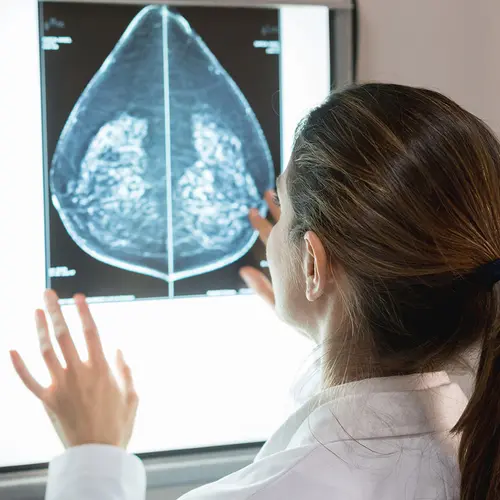Preventive double mastectomy is surgery to remove both breasts as a way to try to prevent breast cancer.
If you're considering it, you need answers to the following questions.
1. Why would someone without cancer consider having a preventive double mastectomy?
Some of the most common reasons are:
- Cancer in the family: Did your mother, sister, or daughter have breast cancer, especially before age 50? If more than one of them had breast or ovarian cancer, then you may be even more likely to get breast cancer.
- BRCA1 or BRCA2 gene mutation: If you have a BRCA1 or BRCA2 mutation, you are five times more likely to ever get breast cancer than a woman without those mutations. It also makes ovarian cancer more likely. If you're thinking about the test, see a genetics counselor to learn more.
- You've had LCIS (lobular carcinoma in situ). LCIS isn't cancer. It's abnormal cells in the breast ducts. If you've had it, you may be more likely to get breast cancer.
There are other possible reasons, like if you've had breast cancer before and are trying to prevent it from coming back, or if you've had radiation therapy. In each of these cases, it's a personal choice that each woman would make with her doctors.
2. How effective is the surgery?
Preventive mastectomy can cut the chance of getting breast cancer by up to 90% in women who are at moderate-to-high risk of getting breast cancer.
But the procedure doesn’t completely prevent breast cancer.
Breast tissue isn't just in the breasts. It's also in the armpits, above the collarbone, and as far down as the abdomen, says Clifford A. Hudis, MD. He is chief of breast cancer medicine service at Memorial Sloan-Kettering Cancer Center. So removing the breasts doesn't remove all that other breast tissue.
3. Are there other options?
Yes, but not with the same drop in breast cancer risk.
- Prescription drugs: A woman at high risk for breast cancer could opt to take tamoxifen or another type of prescription drug called aromatase inhibitors. That would lower her risk by as much as 50%, says Todd Tuttle, MD, chief of surgical oncology at the University of Minnesota in Minneapolis.
- Close observation by MRI, mammograms, and breast exams by a doctor, as well as noticing any changes in her breasts and telling her doctor about them. These don't make breast cancer less likely, but may help find it sooner.
4. How long is the recovery time?
About a month, on average, Tuttle says.
5. Can I start breast reconstruction at the same time?
Yes. Many women do that. The surgeries take about 5-6 hours when done together, Tuttle says.
6. What are the side effects?
Like any surgery, there is risk. You may need more operations if you get an infection or if the tissue doesn't heal, Tuttle says.
Some women may have emotional side effects linked to their body image. For others, the peace of mind they get from having the surgery outweighs changes in their body.
It comes down to how you feel about risk, Hudis says.
Brenda Nelson, of Cloquet, Minn., had a double mastectomy and reconstruction surgeries in early 2013. Nelson has the BRCA1 gene mutation, her mother has had ovarian cancer, and she also has a family history of breast cancer.
“I’m very happy with my decision. It seemed inevitable that I would get cancer, and now my odds are much better,” Nelson says. Still, she respects other women's choices.
“[It was] such a personal decision. I wouldn’t tell anyone to or not to."
7. Are there women who should not get this surgery for medical reasons?
Yes. The surgery isn't recommended if you have other medical problems such as severe heart disease, lung disease, or kidney problems, Tuttle says.
8. Does insurance cover preventive mastectomy?
It varies from state to state. Federal law doesn't require it.
Insurance companies usually pay for the surgery if your doctor says it's needed, and for breast reconstruction, too.
Talk with your insurance company and your doctor so you know what to expect.

